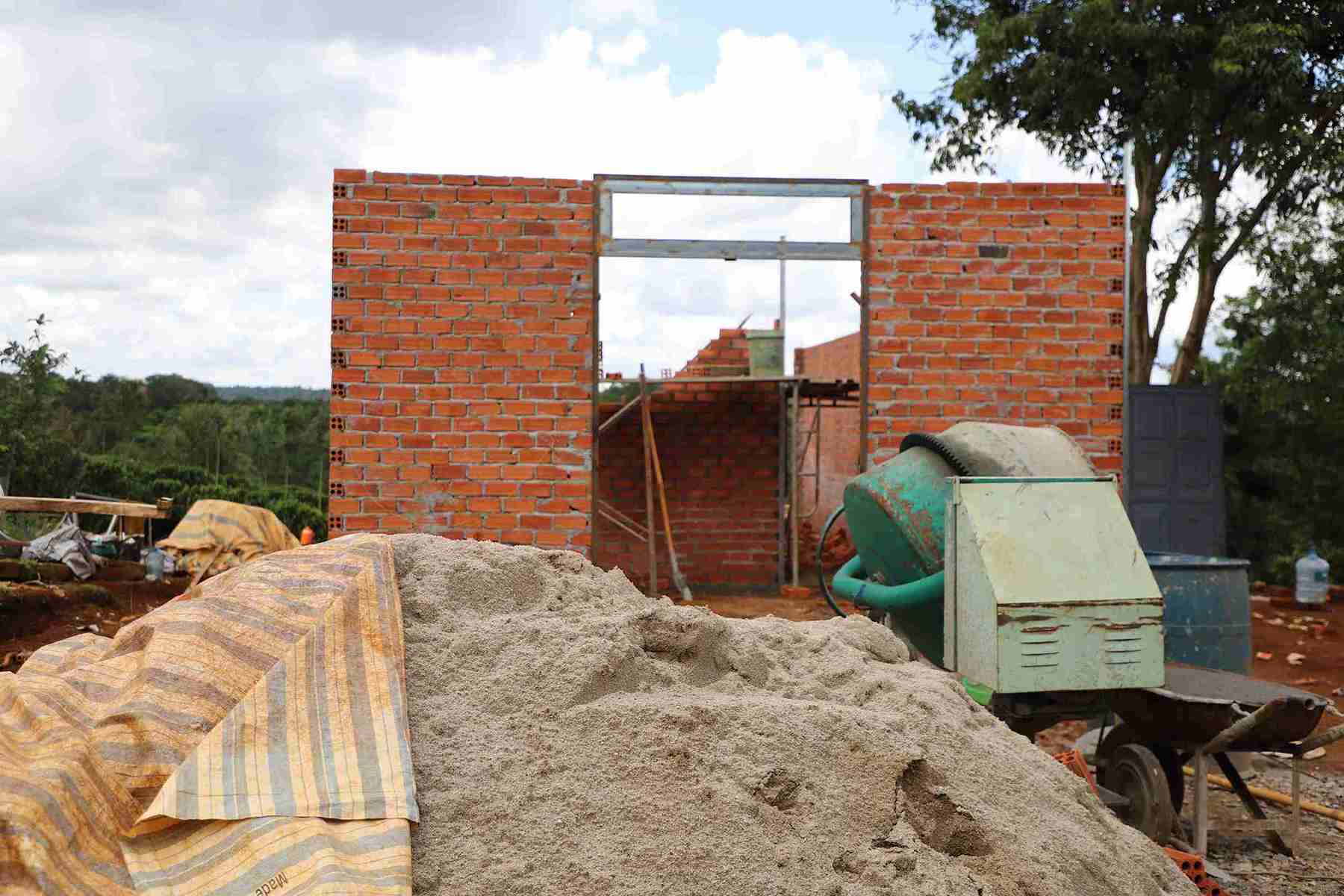Temporarily put aside the dream of settling down
In the midst of the hot summer sun, Mai Thi Huong and her husband, residing in Tan Tien village, Dak R'moan commune, Gia Nghia city (Dak Nong province), wandered through the dirt road leading to their old house.
Just over half a month ago, that house was the home of a family of 8. However, the storm on May 16 swept away the roofs, leaving a huge void on the heads of 8 people still struggling to find shelter.
Regarding the place where the family has been attached to for more than 10 years, Ms. Huong said: "The old house is less than 40 square meters wide. The whole family only has one bedroom, so every night they come back, each person divides a small space for living and resting.
After many years of use, the house has deteriorated. The windows and roof were severely damaged. For many years, the biggest dream of Ms. Huong and her husband has been to have a safe and sturdy roof for their children".
The plan could not be implemented but three years ago, Ms. Huong discovered cancer. The money saved to repair the house was also spent.
"The old house had its roof blown off before it could be repaired. falling into the sky and shining on the ground, we don't know where the bear is", Ms. Huong said sadly.
The local government later supported Ms. Huong's family with 100 million VND to rebuild a new house.
But as soon as the money came to hand, the price of construction materials, especially construction sand, increased rapidly, causing Ms. Huong's family to not be able to implement it. The dream of "residing down" for this poor couple has not yet come true.
"But the sand price is now too high, there is no other way, I have to ask the commune to temporarily stop starting the house, wait for the sand price to decrease and then think about it," Ms. Huong said in dismay.

Ms. Huong is among more than 1,700 households in Dak Nong province expected to have a new house in 2025. The funding source is used by authorities at all levels from programs and policies for people with housing difficulties.
Similarly, 2 weeks ago, the new house of Mr. Dieu Nhoih (Dak Ru commune, Dak R'lap district) was started. Since the foundation was completed, the project has been temporarily suspended due to high sand prices, forcing the project to temporarily "shelter".
According to Mr. Dieu Nhoih, at the time of building the foundation, the price of sand was only 500,000 VND/m3. After that, the sand price skyrocketed to 1.2 million VND/m3. Up to now, most construction materials suppliers do not retail sand, or have no sand left to sell. Therefore, my house has been temporarily suspended from construction.
Ms. Le Thi Thu Ha, a cultural and social officer (Dak Ru Commune People's Committee) confirmed that each block of construction sand is currently sold for about 1 million VND. The price of broken sand is about 1.2 to 1.3 million VND/m3.
This is a record price recorded in Dak Ru. Compared to the average sand price in the area (about 400,000 to 500,000 VND/m3), it is 2.5 times higher.
Control the supply of construction materials
Construction sand prices are constantly increasing, becoming a major barrier, causing the progress of implementing projects to eliminate temporary and dilapidated houses in Dak Nong province to stagnate. Many localities have signed house construction contracts with construction units, but due to high sand prices and scarce supply, many projects are in a situation where they are both working and waiting for prices to decrease.
The leader of the Department of Rural Development (Department of Agriculture and Environment) of Dak Nong province said that if there is no stable supply and sand prices are reduced, it will be difficult to ensure the overall progress of the local program to eliminate temporary and dilapidated houses.
Faced with the above situation, the Dak Nong Provincial People's Committee has issued a document assigning the Department of Agriculture and Environment to advise on a plan to direct competent authorities to control prices and the supply of construction materials, especially sand and stone.
Dak Nong province requires solutions to ensure long-term supply for the construction of key projects and eliminate temporary and dilapidated houses in the province.












